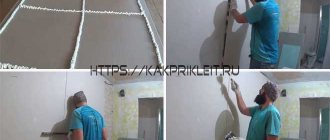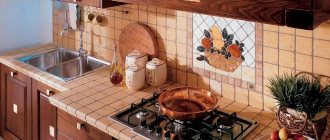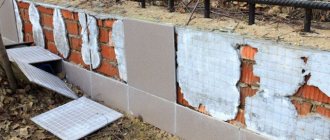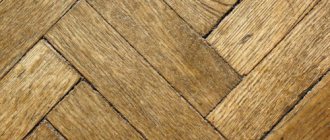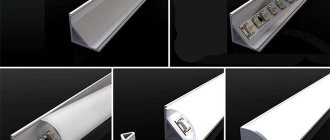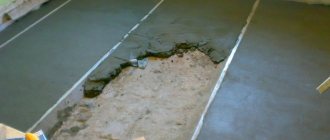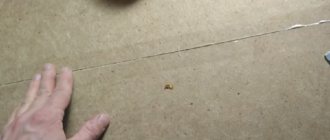Fastening methods
Over the long history of construction work, many methods of attaching wood to concrete have been tested. Among the current and widely used methods, we note the use of specialized assembly adhesives and the use of fastening hardware.
Let's look at the highlight of the implementation of these methods and find out which specific materials are optimal for the purpose of carrying out similar work.
Use of specialized adhesives
If reinforced concrete was cut with diamond wheels, and now you have to install wooden parts that are small in size and weight, you can use special assembly adhesives.
A correctly selected adhesive composition allows you to reliably fix not only baguettes or baseboards, but also overlays on stair steps. But, you need to understand that the range of adhesive compositions is wide, and therefore you can count on the optimal result only if you select the right product.
If you need glue for concrete and wood, pay attention to the following compositions:
- Construction adhesive “Liquid Nails” is a relatively inexpensive and at the same time effective solution for working with materials of interest to us. “Liquid nails” are presented on the market in several modifications, in particular, “Universal”, “Express”, “Super strong”, “Very durable”, “For panels”, etc.
If the question is how to attach a wooden block to a cement wall, the best choice would be a very vicious and universal modification.
The universal type of glue “Liquid Nails” is a good choice for interior use. For example, with this method you can successfully glue wall panels made of lumber to previously cleaned and dust-free concrete.
But if you are interested in how to glue wood to concrete at sub-zero temperatures, you will need very strong “Liquid Nails” with a gripping force of up to 70 kg per 1 m2. This glue will also hold the wood on uneven concrete at temperatures down to -17°C.
- Moment glue is a large assortment of different compositions with different technical and operational properties.
Of particular interest is the “Epoxylin” modification, which is a two-component composition that works with a wide range of materials including concrete and wood.
After drying, the composition not only reliably holds the glued surfaces, but can also be sanded or subjected to other mechanical processing without compromising the adhesion strength.
Another modification of the Moment glue, with which it is possible to connect concrete with wood, is the Joiner Moment. This product is widely used in the installation of floor coverings made using lumber.
Polyurethane foam is a good option for simple and effective gluing
If necessary, it is possible to use high-strength polyurethane foam as an adhesive. This is a good solution for laying wooden floors, installing window sills, wall panels, etc.
This method of connecting two surfaces is characterized by a number of advantages, including:
- affordable price compared to other adhesives;
- greater strength of the connection after the composition has completely dried;
- low degree of thermal conductivity, which is important when finishing floors and walls;
- excellent soundproofing qualities;
- hydrophobicity;
- biological stability;
- simple instructions for use.
But there is also a significant drawback, in particular the long drying time of the foam. Therefore, within 5 minutes. the glued part will need to be held in the desired position so that it does not move away from the surface.
Fundamentally important: In order to ensure optimal contact between the surfaces to be bonded and the foam, they must be lightly wetted with water.
Surface preparation is the key to success
Whichever of the above compositions you choose, before attaching wood to concrete, both surfaces must be properly prepared. In order for the installation work to result in a strong and durable connection, both surfaces must be as smooth as possible, dust-free and grease-free.
The main problem is the porous structure of the material, especially if diamond drilling of holes in concrete was carried out. This property is a circumstance of excessive absorption of adhesives, and therefore the connection does not have time to gain the proper strength.
It is not difficult to make a coating from concrete that is predisposed to gluing; to do this, it is necessary to reduce the number of pores. For this purpose, deep penetration primers are used, which penetrate into the porous structure of the material and harden there. As a result, the micropores close, and the density of the concrete allows the use of glue.
It is fundamentally important: Wooden parts should be glued to previously prepared cement bases in strict accordance with the instructions of the manufacturer of the adhesive compositions.
Fastening methods
Wood can be glued to concrete using a variety of compounds, but whether they will keep the materials securely fastened to one another is unknown. Therefore, it is best to use proven substances that have been repeatedly used by craftsmen and have shown a high level of strength and durability. The most common fastening methods are glue mounting, the use of hardware, and the selection of special installation materials.
Application of specialized adhesives
Special mounting adhesives are suitable for working with wooden elements that are small in weight and size. The adhesive composition can well fix plinths or baguettes, even overlays on staircase steps.
Which adhesive is best to choose for concrete and wood:
- The construction composition “Liquid Nails” is an effective and inexpensive option. The material is presented in the following modifications: “Super strong”, “Express”, “Universal”, “For panels”, “Extra durable”, etc. It is worth choosing the most durable and versatile composition. The glue is safe and suitable for interior finishing work. Concrete must be cleaned and dusted. For work in cold weather, especially durable “Liquid Nails” with a gripping force of about 70 kg/m2 are chosen.
- Glue "Moment" - there is a large selection of compositions with different performance properties and technical characteristics. The Epoxylin modification is best suited for the task - a two-component composition that reliably fixes the surfaces to be bonded and can be sanded and machined without compromising the integrity of the joint. You can also use Moment Joiner - it is ideal for laying wooden flooring.
- PVA glue – when choosing how to glue wood to the concrete of a house, you can choose this option. But the composition is not suitable for places where it may be exposed to high/low temperatures and moisture, as it quickly loses its properties.
- Polyurethane adhesive – demonstrates increased adhesion when gluing hard wood. Maximum fixation occurs 20 hours after application. Not afraid of sudden temperature changes, high loads, or moisture.
- Heat-resistant glue - tolerates high temperatures well (does not crumble, does not dry out), is often used in carpentry.
- Epoxy composition - can be used for all types of wood, leaves no marks, dries completely within 24 hours.
- Casein adhesives – have characteristics similar to polyurethane adhesives. Among the disadvantages, it is worth noting the ability to change the color of the wood that it fixes.
When choosing a glue, you should pay attention to the following important factors: type of wood (some types of glue are suitable only for working with certain species, but mostly the compositions are universal), the effect of the glue on the material (it can be transparent or leave marks on the wood), operating conditions, duration of fixation strength gain, etc.
Polyurethane foam - an option for simple and effective gluing
For a number of reasons, many craftsmen use polyurethane foam instead of glue. This option is also acceptable, but you need to choose high-strength foam. The solution is suitable for installing wall panels, window sills, wooden floor coverings and other elements that do not experience too much pull-out load.
The main advantages of using polyurethane foam:
- Relatively low cost (if we take into account the price of other adhesives).
- High strength of fixation after complete drying of the joint.
- Low level of thermal conductivity, which is important when finishing walls and floors.
- Excellent soundproofing properties.
- Hydrophobicity.
- Resistance to various negative factors, including biological ones.
- Simplicity and speed of installation.
Among the disadvantages of polyurethane foam, it is worth highlighting its rather long drying time. So, after applying the composition, the part will have to be tightly fixed and held for 5 minutes so that it does not begin to move away from the concrete surface.
It is also worth remembering that to ensure maximum contact between the foam and the surfaces to be joined, they need to be slightly moistened with water.
Surface preparation is the key to success
The strength of the fixation will directly depend on the quality and correct preparation of the surfaces to be joined. Regardless of what composition was chosen for connecting wood and concrete, both surfaces must be properly prepared. Both wood and concrete should be as grease-free, dust-free, and smooth as possible.
The main problem at this stage is the porous structure of concrete, which tends to absorb the adhesive until the fixation becomes sufficient after the glue dries. To increase the reliability of adhesion, it is advisable to prepare the concrete and reduce the number of pores: it can be coated with special deep penetration primers, which impregnate the pore structure and harden in them, creating a smooth surface.
It is usually enough to simply clean the wood from dust and residues of building materials, and keep it in the room for a certain time (so that the elements do not “lead” later). Any adhesive is used in strict accordance with the instructions.
The best glue for wood PVA Kleiberit 303.0
- load group D3/D4;
- open holding time – up to 10 minutes;
- processing temperature – from +18 to +20 degrees;
- short pressing time;
- manufacturer – Germany.
The leader in our rating was the most durable wood glue from the famous brand Kleiberit 303.0 PVA for high-load gluing. It is used for joining hard wood, slabs in the manufacture of windows, doors, parquet and stairs. Suitable for hot and cold gluing. The seam is barely noticeable - it is transparent and elastic.
Kleiberit, as a one-component adhesive, belongs to moisture resistance class D3 and does not require mixing, and as a two-component adhesive, it belongs to group D4, meeting high requirements. With the help of a hardener it is also used in aggressive conditions. Available in cans of various weights: 0.5 kg, 1 kg, 5 kg, 10 kg. Final strength and water resistance are confirmed after 7 days.
Kleiberit 303.0 b is suitable for use in rooms with high humidity. Designed for interior work.
Reviews
Users like the price-quality ratio. Kleyberite, reliable adhesive connection and minimal drying time of the mixture. There are no negative reviews. One of the small drawbacks is that the substance is difficult to wash off.
Pros:
- suitable for both hot and cold gluing methods;
- elastic colorless seam;
- dries quickly;
- affordable price;
- convenient packaging;
- waterproof.
Minuses:
- It's hard to wash off your hands.
Review of adhesives for linoleum
The most optimal and reliable option is gluing. For this purpose, a lot of compounds and adhesive tape are produced.
1. Linoleum on the substrate is glued with dispersion mixtures, such as Bustilat, ADM-K. They penetrate the finish to dense layers. They are completely safe, do not emit a pungent odor, therefore they are widely used in residential areas.
2. Bitumen-polymer glue and bitumen mastic are used for different types of linoleum. Excellent for wet rooms, as they create additional waterproofing.
3. Products made from artificial resins and rubbers, such as Perminid, Gumilax, KN-2 and KN-3, are suitable for synthetic fabrics without a backing. They are based on different types of compositions: bitumen-chalk, oil-chalk, cement-casein.
4. A layer of glue for linoleum without a backing or on a jute base - only 0.5 mm. Insulating backed fabrics require at least 7mm of the mixture to penetrate the fiber textile.
5. You can also glue linoleum to concrete using double-sided tape. Some companies produce special tape, such as DublKote.
6. When choosing between glue and tape, it is necessary to take into account the unevenness of the base. When using the first, it is possible to compensate for minor differences; for the second, the base surface must be ideal.
7. The intensity of operation is also taken into account. For rooms with high traffic, bitumen compounds, mastics and synthetic glue are suitable. It is enough to fix linoleum in living rooms with double-sided tape. It is also used for gluing carpet.
How to glue foam to concrete?
Expanded polystyrene boards are popular insulation materials for external walls. They are secured using lathing, but gluing is a more economical and simpler installation method.
How to glue insulation to a concrete wall depends on the properties of the slabs and the type of subsequent finishing. You need to choose glue especially carefully, since many types are capable of entering into chemical reactions with insulation, melting it and deforming it. To further complicate the situation, EPS boards have poor adhesion.
Since the work is carried out outside, the glue must be resistant to temperature changes and high humidity.
Suitable for gluing polystyrene foam and concrete:
- Dry cement adhesive (Moment PPS, Anserglob BCX 39). There are polymer additives that improve surface adhesion and ensure long service life. Before insulation, the wall is treated with a primer. If there are differences of more than 3-5 cm, they are applied to the slabs in strips; if the plane is flat (defects up to 3 mm), then with a notched trowel.
- Adhesive foam. Available in cylinders with a nozzle in the form of a pistol. Popular brands – Ceresit CT 84, INSTA STIK. It sets faster and is used more economically than the cement mixture, and also serves as additional insulation. It is easier to work with as it does not need to be prepared and used at a set time.
- Liquid nails (Moment Installation) based on polymers, rubber and clay. Dries quickly and withstands temperature fluctuations. They are applied to foam plastic boards in dots or zigzags, and are used very economically.
If there are several more layers of heavy finishing on the surface of the insulation, the glued slabs should be secured with dowels with wide heads. Decorative foam boards for the ceiling are most often glued to liquid nails. But you can also use double-sided tape. Before applying it, clean the surface from dust and debris, degrease and prime.
Some brands of double-sided tape can withstand heavy weight and temperature changes and are resistant to moisture, so they can even be used for gluing polystyrene foam. To glue foam plastic to the ceiling, it is better to choose adhesives that set quickly, otherwise each element will have to be held manually for a long time. All of the above compositions are also applicable for insulating indoor floors with extruded polystyrene foam.
How to glue wood to concrete?
Modern concrete adhesive allows you to fix even wood materials on it. It is selected based on the characteristics of the product that needs to be connected to the base. Different types of mixtures are suitable for laminate, plywood, parquet and pure wood.
The following types are used for gluing plywood to a concrete surface:
- Dispersive. Provides fixation on concrete, but reinforcement with dowel nails should be provided. The glue dries within a week.
- Alcoholic. There are artificial resins and solvents; it is recommended to protect your respiratory system when working; it dries faster. Remains elastic throughout its entire service life and therefore does not crack.
- Two-component. Dries in just 48 hours, provides the best strength, no need for dowel nails.
Small wooden parts, such as baseboards or slats, can be glued to concrete with liquid nails. Parquet or wood laminate should be fixed with epoxy or polyurethane. The former withstands temperature changes well, the latter serves as a sealant. When working, it is important to remember that wood requires preparation before installation; most materials must be primed and dust must be removed.
Glue cost
When choosing, it is important to take into account all the characteristics and scope of application. It is worth paying attention to consumption and service life, since visible savings may entail additional financial costs.
| Name | Price, rubles |
| Bustilat Lakra 1 kg | 80 |
| Perminid mastic 20 kg | 2000 |
| DublKote tape 660x6.4 cm | 1600-1800 |
| Cement adhesive Moment PPS 25 kg | 190 |
| Adhesive foam Ceresit CT 84 850 ml | 550 |
| Liquid nails Moment Installation 400 g | 190 |
In cases where you need to glue small parts to a concrete base, the best option is liquid nails; they combine equally well with almost all types of finishes (wood, artificial flooring, foam). For large-scale work, it is more profitable to purchase a dry composition in a large container for independent preparation at the installation site. Choosing a good glue is half the quality result. In order for the materials to firmly adhere to each other, it is necessary to clean them of dust and debris, degrease and prime them.
How to glue other materials to concrete
Fastening polystyrene foam, polystyrene foam, penofol and penoplex
Materials such as polystyrene foam, expanded polystyrene, penofol and penoplex are intended for insulating the external walls of a house, therefore, in order to glue them to its concrete surface, it is necessary that the adhesive meets the following characteristics:
- withstands temperature changes;
- hardened quickly;
- did not contain solvents that would dissolve the insulation surfaces;
- glued securely;
- was easy to use.
Birss concrete contact consumption during house construction or renovation work can be read in the article.
Read also about what kind of glue is needed for polystyrene foam.
Selecting a binder for plastic, plastic and PVC panels
For gluing plastic to the concrete surface of the ceiling, the multi-purpose “Moment Germent” is well suited, which can properly glue these two surfaces.
Plastic is connected to concrete using conventional Titan construction adhesive, which has excellent adhesion and moisture resistance.
Also, “Liquid Nails” are well suited for gluing plastic surfaces with cement. This glue can be purchased in the form of a dry mixture, which consists of cement and polymers.
Kawabanga! Composition and proportions of foam concrete
In construction, it would be useful to know about concrete GOST 26633 2012.
Wood, laminate, plywood, parquet and sandwich panels
Ruberoid
Metal with stone
Even such incompatible materials can be glued. A two-component epoxy composition can act as their reliable binder. It contains:
- a mixture of epoxy resin with filler and plasticizer;
- combination of thixotropic additive and hardener.
In this article, you can emphasize for yourself which foundation is suitable for a house made of aerated concrete.
To obtain glue, these two components are mixed immediately before construction work and applied to the prepared surfaces.
Linoleum and glass with concrete
Anyone who wants to build a house for themselves from a durable material such as concrete, it will be important to know about all the pros and cons of aerated concrete blocks.
Hardboard
It will be interesting to read an article about the differences between foam concrete and aerated concrete.
For such critical work, you can also use “KS-3” construction adhesive or “Kn-3” rubber mastic.
Tricks of gluing with isolon and foil
It is important to know the difference and what is better: aerated concrete or foam concrete.
For ceramic and tiles
Also read about what adhesive for drywall should be.
Which tree to choose?
Types of materials
An important point in installing wooden floors is the choice of wood. For these works, the building materials market offers the following types of building materials for the consumer to choose from:
Six-meter boards can be used as covering material.
- Six meter boards. The thickness of the products ranges from 20 to 60 mm. Using grooves and tongues at the edges, the wood is joined.
- Two-meter parquet. These products are not only shorter in length, but also thinner. It is 18-25 mm. The joining principle is similar to the previous type.
- Engineering. They are products glued together from three layers of wood. Pine is used for the lower part, and the upper parts are made of valuable wood.
Criterias of choice
Wooden boards are used for both rough and finishing installation. If the wood flooring is planned to be covered with laminate or linoleum, then the quality of the material can be chosen even unplaned. If the wooden covering on the concrete base is the finishing one, then the boards chosen are tongue-and-groove with a planed surface. When choosing wood, the following criteria are adhered to:
To perform such work, the material must be carefully sanded.
- The wood must be dried, but not overdried, since excessive dryness leads to deformation of the boards under the influence of moisture and temperature changes.
- The material is purchased with a margin of 15%.
- The boards must be smooth, sanded and free from defects.
- Wood from different batches may differ in shade and texture, so experienced experts recommend buying boards of the same type.
- Regardless of the quality of the wood, the boards must be at least 2 m long.
- When installing flooring on a concrete base, raw materials made from softwood are most often chosen, as they are resistant to abrasion. Material made from oak and beech is more durable and expensive.
Types of adhesives
Combined solutions are capable of bonding two different surfaces:
- Expanded polystyrene or polystyrene foam.
- Rubber surfaces and concrete.
- Concrete structures with metal products.
Epoxy adhesive
It is capable of creating a thin coating on the concrete surface and promotes good adhesion.
Epoxy adhesive can also be used to join tiles. But after processing, the seams need to be rubbed down.
Furyl glue
Furyl adhesives contain resins of the same name, which can instantly harden under the influence of heat.
The advantages of such compositions include:
- Maximum fixation strength.
- Resistant to moisture.
- Resistance to chemical reagents.
- Protection against corrosive processes.
Adhesive mixtures for blocks
In the construction industry, the technology of arranging walls from blocks is especially popular. Such designs are characterized by low weight and ease of processing.
Kawabanga! How to glue foam to concrete; material selection
And in order to build an integral structure on their basis, the following types of adhesive mixtures should be used:
- For expanded clay concrete blocks.
- For gas silicate blocks.
- For foam concrete blocks.
Some builders prefer the classic version of connecting blocks - laying them on a mortar of cement and sand.
Adhesives that work in extreme conditions
A separate category includes adhesive mixtures that are subject to intense overload due to temperature fluctuations or high humidity.
They are in demand when finishing the following structures:
- Swimming pools and hydraulic structures on the site.
- Fireplaces inside the house.
- Warm floor design.
- Public baths and saunas.
In addition to the listed objects, specialized adhesives may be required when carrying out work on the steps of access stairs, which are covered with a layer of ice during the cold season.
Among the large range of adhesives for extreme conditions, the Ceresit mixture is especially popular.
The advantages of Ceresit products include improved adhesive properties and low cost.
Polymer analogues
The curing time is determined by the specific composition and environmental conditions in which construction work is carried out. At favorable temperatures, this process takes a couple of hours.
This polymer analogue is characterized by increased resistance to chemicals, oils and water. It also meets all environmental standards and demonstrates increased adhesive strength.
Positioning, compression of parts
Curing the parts helps increase the viscosity of the adhesive, which is good for holding the parts in the bonding position. However, this approach is used mainly in modeling and making non-critical adhesive seams. Most carpentry adhesive joints require rigid fixation of parts using clamps and stops.
Fastening parts with additional pressure not only allows you to maintain their position while the glue dries, which is almost always accompanied by shrinkage and warping of the wood from local moisture. As the glue becomes more viscous, the pressure helps to push the composition that has not yet set deep into the pores, which increases the strength of the adhesive seam.
A huge number of clamps of different types and sizes are used in carpentry. To glue flat parts, you can also use regular bending, pressing the product to the table with a weight weighing 7-10 kg. But to connect linear elements, you need not only to maintain the corners, but also to compress the parts, which can be quite large. Ordinary linear clamps do an excellent job of this task; if the length is insufficient, a stop can be attached to the parts, but only if the place where it is fixed is covered by another part of the product. It is also widely practiced to temporarily attach the stops to the frame with clamps.
To glue parts at an angle, specially shaped clamps are used, having two pairs of clamps and fixed jaws, rigidly fixed to the frame in a given position. This tool can be replaced by a number of devices, which is often practiced when gluing at angles other than straight lines. For example, wedges cut according to a general template can serve as a temporary stop. With this positioning method, it is important that the clamping force is directed as close as possible to perpendicular to the adhesive joint. For these purposes, the back parts of the clamps and stops can take a wide variety of shapes.
In conclusion, we will give a couple of practical tips on how to ensure that adhesive seams are invisible. Most wood glues have a translucent white color for a reason: after drying, minor drips can be easily hidden under a layer of protective and decorative coating. But there are a number of exceptional situations.
For example, initially invisible traces of glue on wood become clearly visible when impregnated with oil. If you plan to coat the product in this way, you need to work with glue as carefully as possible. Excess glue protruding from the seam should not be wiped off immediately; it is better to wait for it to pre-set, and then cut it off with a modeling knife. It’s the same story with drips: attempts to wipe them off will only lead to deeper absorption, so it’s better to simply blot the drop with a foam sponge, and after drying, clean the defective area with a scraper.
If small residues of exposed adhesive need to be removed, solvents can be used. Depending on the type of glue, these can be acetone (for most adhesives based on synthetic resins), isopropyl alcohol (for those based on PVA), toluene (for universal rubber adhesives and epoxy resins), as well as ordinary soapy water (for natural reversible adhesives). Dried excess should be wiped off with a completely clean rag or cotton napkin strictly in the direction of the adhesive seam.
The main problem that one has to face when gluing anything to concrete is the extremely low adhesive ability of this material. Simply put, taking plywood, linoleum or MDF and gluing it to concrete will not work. First you need to strengthen the adhesion of concrete, and then glue the required material.
Processing of adhesive seams
In conclusion, we will give a couple of practical tips on how to ensure that adhesive seams are invisible. Most wood glues have a translucent white color for a reason: after drying, minor drips can be easily hidden under a layer of protective and decorative coating. But there are a number of exceptional situations.
For example, initially invisible traces of glue on wood become clearly visible when impregnated with oil. If you plan to coat the product in this way, you need to work with glue as carefully as possible. Excess glue protruding from the seam should not be wiped off immediately; it is better to wait for it to pre-set, and then cut it off with a modeling knife. It’s the same story with drips: attempts to wipe them off will only lead to deeper absorption, so it’s better to simply blot the drop with a foam sponge, and after drying, clean the defective area with a scraper.
If small residues of exposed adhesive need to be removed, solvents can be used. Depending on the type of glue, these can be acetone (for most adhesives based on synthetic resins), isopropyl alcohol (for those based on PVA), toluene (for universal rubber adhesives and epoxy resins), as well as ordinary soapy water (for natural reversible adhesives). Dried excess should be wiped off with a completely clean rag or cotton napkin strictly in the direction of the adhesive seam.
Preparatory activities
The quality of the concrete on which the wooden floor is laid is regulated by SNiPa 3.04.01-87. Inconsistency of the base leads to deformation and premature failure of the parquet.
In order to properly lay a wooden floor on a concrete base, it is necessary to carry out preparatory work. Such measures will ensure a long service life of the parquet. The preparation of the concrete base is carried out in the following order:
If, after the floor has hardened, any unevenness remains on it, then it should be removed by sanding.
- Drying concrete. Laying of a wooden floor is carried out no earlier than a month after pouring. This is exactly how long the material needs to acquire the necessary strength.
- Elimination of defects. Using self-leveling mixtures, the pits are leveled, and the bumps are smoothed by grinding.
- Arrangement of communications and cables. A diamond drill is used for this procedure.
- Waterproofing. Necessary to prevent moisture penetration from the concrete base.
Fastening using dowels
If you need high-quality and durable fastening of a wooden pole to concrete, simple glue or foam is not enough. In this case, it is possible to use fastening iron products designed for high mechanical loads.
Heavy wooden parts can be attached using dowel nails and anchor bolts. The principle of operation of these fasteners is similar, since after they enter the concrete, their working part begins to burst. As a result, the fastening of wooden pillars to the cement base is very strong.
Ceramics on plywood
The sequence of work is as follows:
- Surface primer. It is advisable to repeat this step several times. Each layer must dry thoroughly before the next one is applied.
- Choice of glue. It is best to buy a composition with a high elasticity index. Only when using such glue can you achieve an excellent result in which the ceramics will not crack under mechanical loads.
- Gluing tiles to plywood.
Experienced craftsmen use compositions with a two-component base when working. They are divided into polyurethane and those containing epoxy resins. The advantages of compositions with two components are excellent waterproofing properties and adhesive strength.
Advice! It is best to choose two-component elastic compounds for bonding plywood and ceramics from trusted brands.
Choosing adhesive for cellular concrete blocks
- Hercules for cellular concrete
is worth highlighting among the highest quality and inexpensive. The solution is used in the construction of external and internal walls made of highly porous materials, including cellular concrete. Also suitable for eliminating small defects in walls and floors. Before use, the surface must be sanded, dirt, lubricating oils, and bitumen removed. The preparation of glue is carried out by dissolving the powder in water and thoroughly mixing mechanically or manually until a plastic mass is obtained. - Volma-Block which is designed to eliminate cold bridges at joints. It is used both for installation of gas and foam concrete, and for laying walls. The solution is easily mixed and applied to a clean surface, which, if necessary, is leveled in advance with the mortar mixture. The finished mixed mixture can be used within three hours, and the glued blocks can be adjusted within ten minutes. Operating temperature range +5…+30С. The glue must be stored in dry rooms on wooden pallets.
When working with any glue that contains cement, you must be careful, be sure to use work clothes, gloves, and protect your skin.
Cellular concrete blocks are held together with special dry mixtures of quartz sand, Portland cement, and additives to improve thermal insulation properties and strength.
Their advantages over simple mortars:
- possibility of applying a thin layer up to 3 mm,
- higher strength and water holding capacity,
- reducing the number of cold bridges.
Preparation of the composition begins by pouring the contents of the bag of powder into water.
- Mixing is done using a drill or stirrer.
- The resulting solution should be thick, plastic, and not spread when applied.
- The finished mixture is given about three hours to use, after which it begins to thicken and requires repeated mixing.
Epoxy glue-adhesive for concrete
Epoxy glue application
Designations according to classification
Epoxy glue application
Mapei eporip mixture consumption
1. Epoxy resin ED-20 in an amount of -100 (parts by weight).
2. Plasticizer in the form of SKN-10 rubber in an amount of 10 (parts by weight).
3. Solvent R-4 in an amount of 10 (parts by weight).
4.Hardener Polyamine AF-2 in the amount of 6 (parts by weight).
1.Epoxy resin ED-20 in an amount of 100 parts by weight.
2. Solvent R-4, in an amount of 10 parts by weight.
Types of compositions and the advisability of their use
3. Hardener Polyethylene in an amount of 12 parts by weight.
4. Surfactant (surfactant), grade OP-7, in an amount of 2 parts by weight.
Concrete is an irreplaceable material. To work with it, it is necessary to use high-quality equipment, adherence to working technologies, use of qualified labor and, of course, the selection of reliable and modern adhesive mixtures.
Step 1: Two basic steps for concreting
There are different adhesives on the market today for working with concrete. All of them are ready-made mixtures, which include additives, fillers, and cement itself.
Kawabanga! Mesh for cutting off concrete; woven metal
Stick it to concrete? No problem!
Life has long convinced us that almost anything can be glued together: concrete, metal, glass, plastic, cardboard, etc. We drive across bridges built with glue in cars, where many parts are glued, we wear glued clothes and shoes. Modern adhesive compositions provide such strength of connection that if over time the products fail, then often the destruction occurs along the material being glued, but the seam remains unharmed .
Continuously developing, gluing as a technological process has reached such a level that it is actively used in civil and industrial construction, as well as in the industry for the production of building materials and structures.
Attaching joists to a concrete floor
Scheme for attaching joists to a concrete floor.
The second common case in construction of attaching a wooden beam to a concrete surface is installing joists on the concrete floor. Modern floor equipment techniques are very diverse: various insulating materials, heated floors, various solutions for leveling and improving the floor surface, etc. are used.
But even today, the option of installing ordinary wooden logs is quite relevant for both houses and apartments. This method of laying floors is used, as a rule, in houses where there are no problems with ceiling heights, but where one would like to save on expensive insulating materials.
